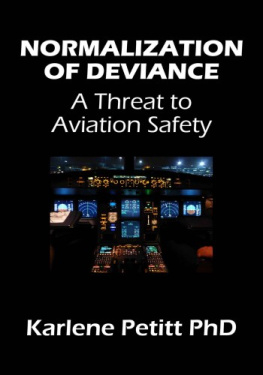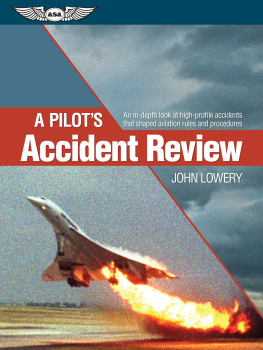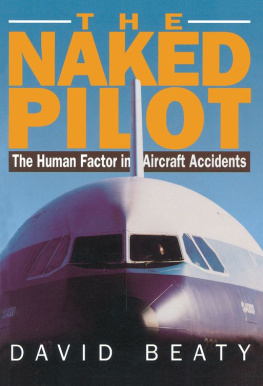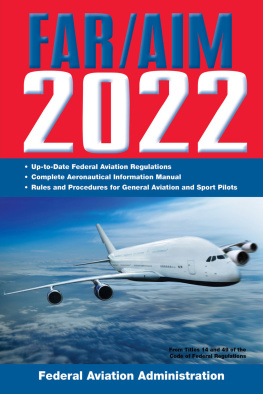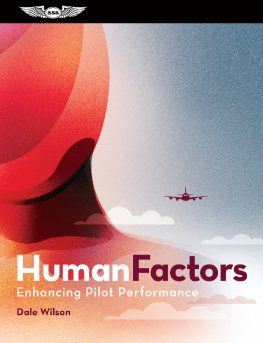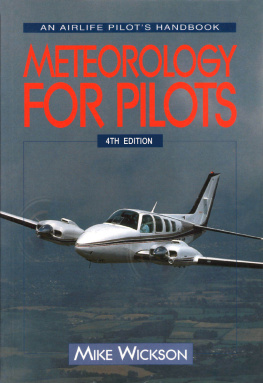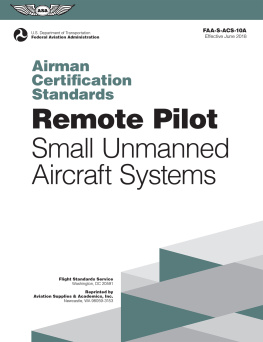The things that airlines, aircraft manufacturers, and the FAA are not sharing with the public. This book is the result of the authors doctoral research Safety Culture, Training, Understanding, Aviation Passion: The Impact on Manual Flight and Operational Performance . While the intent of the research was to learn what predicted manual flight, what was learned may have predicted and, if heeded, prevented the Lion Air Flight 602, 2018 crash, Ethiopian Flight 302, 2019 crash, and Atlas Air Flight 3591, 2019 crash. What was learned could also have prevented the Air France Flight 447 crash. We now have the data that proves we cant simply blame the pilot.
There is never one reason an accident occurs, but a chain of events. If you travel, fly, or touch aviation in any aspect, you have every reason to read this book. If you wish to read the actual dissertation, it may be found at https://petittaviationresearch.com.
Inspiration. Motivation. Plane Stuff.
Sometimes truth is scarier than fiction
By Karlene K. Petitt
at
Flight To Success
www.KarlenePetitt.com

Copyright 2019 by Karlene Petitt
All rights reserved. No part of this publication may be reproduced or transmitted in any form or by any means, electronic or mechanical, including photocopy, recording, or any information storage and retrieval system, without permission in writing from the publisher.
Requests for permission to make copies of any part of this work should be submitted online at JetStarPublishing@gmail.com
The thoughts, opinions, and attitudes expressed in this work are my own, and do not represent those of my employer.
ISBN 978-1-944738-08-2
www.JetStarPublshing.com
DEDICATION
I dedicate this work to the thousands of pilots worldwide who participated in this research, and to those who are courageous enough to use these results to create positive change.
Books by Karlene Petitt
Flight For Control
Flight For Safety
Flight For Survival
Flight For Sanity
Flight For Truth
Flight To Success, Be the Captain of Your Life
I Am Awesome, The ABCs of Being Me

Authors Note

N ormalization of deviance was a term that once identified pilots who didnt follow standard operating procedures and that behavior subsequently became the norm. Researchers identified that these employees didnt recognize their behavior as deviant because the behavior had subsequently become a normal occurrence within the organization. Today, this type of deviant behavior in the flight deck is rare due to standard operating procedures in automated aircraft. Rogue pilots are no longer able to perform in a manner conflicting with regulation, because modern day aircraft automatically report aircraft operations. However, normalization of deviance is not extinct. Research has identified that the current deviant behavior may have shifted from the flight line to corporate offices in the form of a negative safety culture.
Normalization of deviance is now the term that explains how an organizations culture and associated behavioral norms can violate FAA requirements and encourage pilots to perform in a manner contrary to written policy. It further explains how operators can know that pilots have insufficient knowledge, lack understanding, and are losing manual flight skills, yet they fail to improve training methodologies in order to increase the level of understanding. Furthermore, normalization of deviance may also explain how management can retaliate when employees follow the FAA mandate of see something say something . Its hard to imagine anyone retaliating against someone offering suggestions for safety, however, with a negative safety culture, manage by threat simply becomes a management style. A management style that has now been directly tied to operational performance.
Today, normalization of deviance is nothing more than an unacceptable term to justify illegal behavior in the corporate office. Illegal because federal law protects employees from retaliation for reporting safety concerns. Unacceptable because any adult who doesnt identify illegal behavior as wrong is fooling nobody. The problem arises when toxic leadership condones, supports, and perpetuates retaliatory behavior, and this becomes the norm within the organization. There is no question that such behavior is the core of a poor safety culture.
This book is the result of my doctoral research Safety Culture, Training, Understanding, Aviation Passion: The Impact on Manual Flight and Operational Performance . Unless you are working toward a PhD, you would have no reason to read a dissertation. However, if you travel, fly, or touch aviation in any aspect, you have every reason to read this book. If you wish to read the actual dissertation, it may be found at https://petittaviationresearch.com.
This work would not be possible without the thousands of pilots who participated, others who reached out to locate pilots and encouraged them to respond to the studys survey, and all those who sent me comments, which I have included in this book. Our hope is that regulators and airlines heed the lessons learned, listen to the pilots concerns, and take the appropriate action.
Synopsis

T he objective of my research was to understand pilots preference for manual flight versus automation by identifying the relationships between 1) pilot training, 2) aircraft and systems understanding, 3) safety culture, 4) manual flight behavior, and 5) aviation passion. A survey instrument titled Manual Flight Inventory (MFI) was designed to gather and assess self-reported variables in these areas. Opinion-based questions were also asked to fully understand pilots thoughts on automation, safety culture, policies, procedures, training methodologies and assessment measures, levels of understanding, and study techniques.
Exploratory Factor Analysis (EFA) was used to identify underlying factors from the data, followed by Confirmatory Factor Analysis (CFA) to test how well the measured variables represented the constructs. The measured variables were the results of the survey questions. The constructs were the factorspilot training, aircraft and systems understanding, safety culture, manual flight behavior, and aviation passion. Structural Equation Modeling (SEM) was used to assess the causal relationships in order to either support or not support the hypotheses. For those who are interested the methodology and data collection process, please find the dissertation at https://petittaviationresearch.com. All references utilized in the original research can be found at the back of this book, as well as a list of definitions and acronyms. Superscript characters in the text indicate the reference work numbered at the end of the book.
In brief
The study began with the question as to why pilots were not manually flying their aircraft. Regulatory officials identified this to be a problem, not only with manual flight and skill loss, but lack of understanding of their equipment and associated displays. This was identified as a problem, and the Federal Aviation Administration (FAA) recommended all airlines to encourage manual flight.
While the intent of this research was to learn what predicted manual flight, what was learned may have predicted and, if heeded, prevented the Lion Air Flight 602, 2018 crash, Ethiopian Flight 302, 2019 crash, and Atlas Air Flight 3591, 2019 crash 275, 276, 277 . What was learned, if heeded, could also have prevented the Air France Flight 447 crash. There is never one reason an accident occurs, but a chain of events. At the core of all four of these accidents were failures in safety culture, reporting culture, pilot training, lack of understanding and, as a result, performance.
Next page
